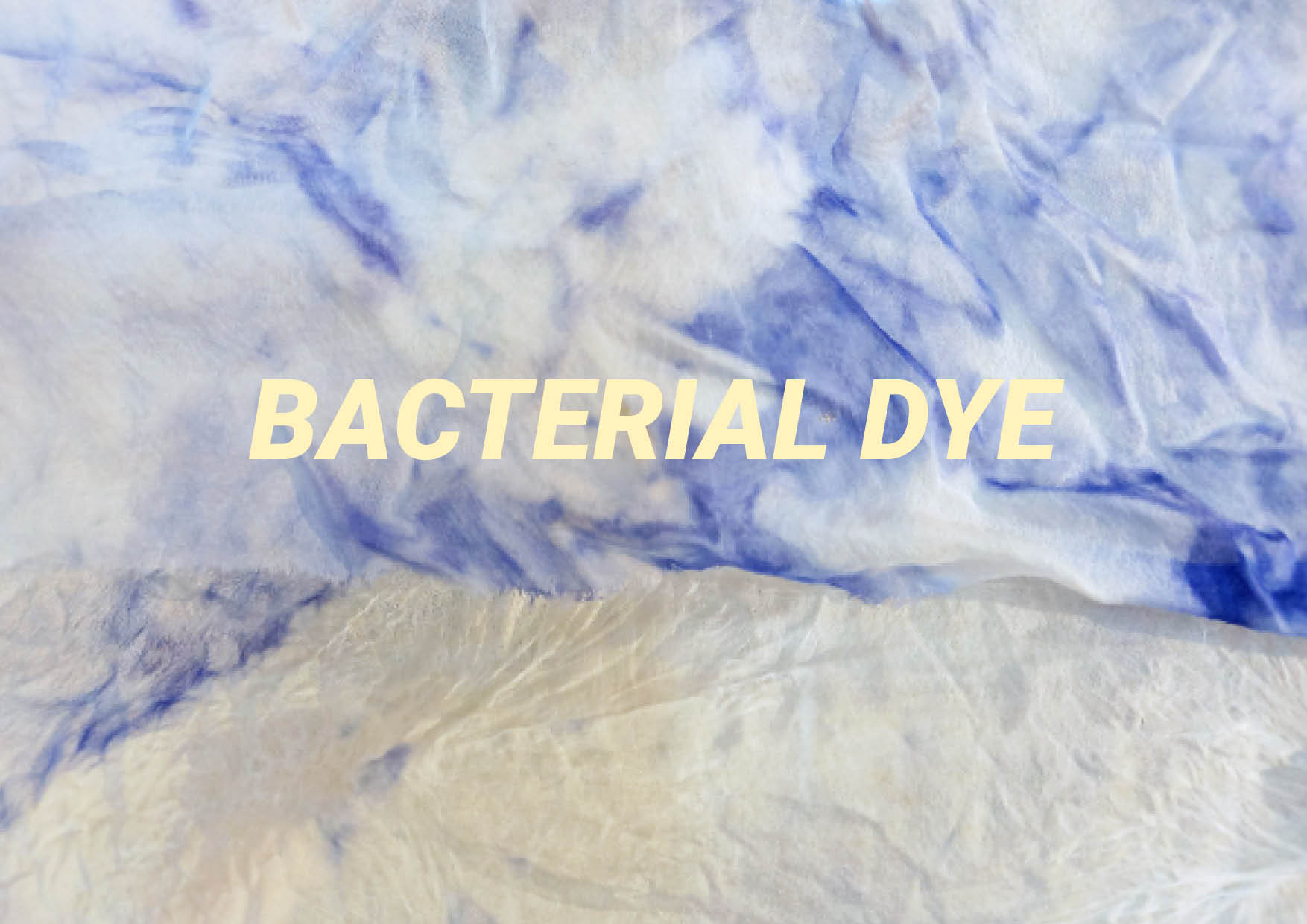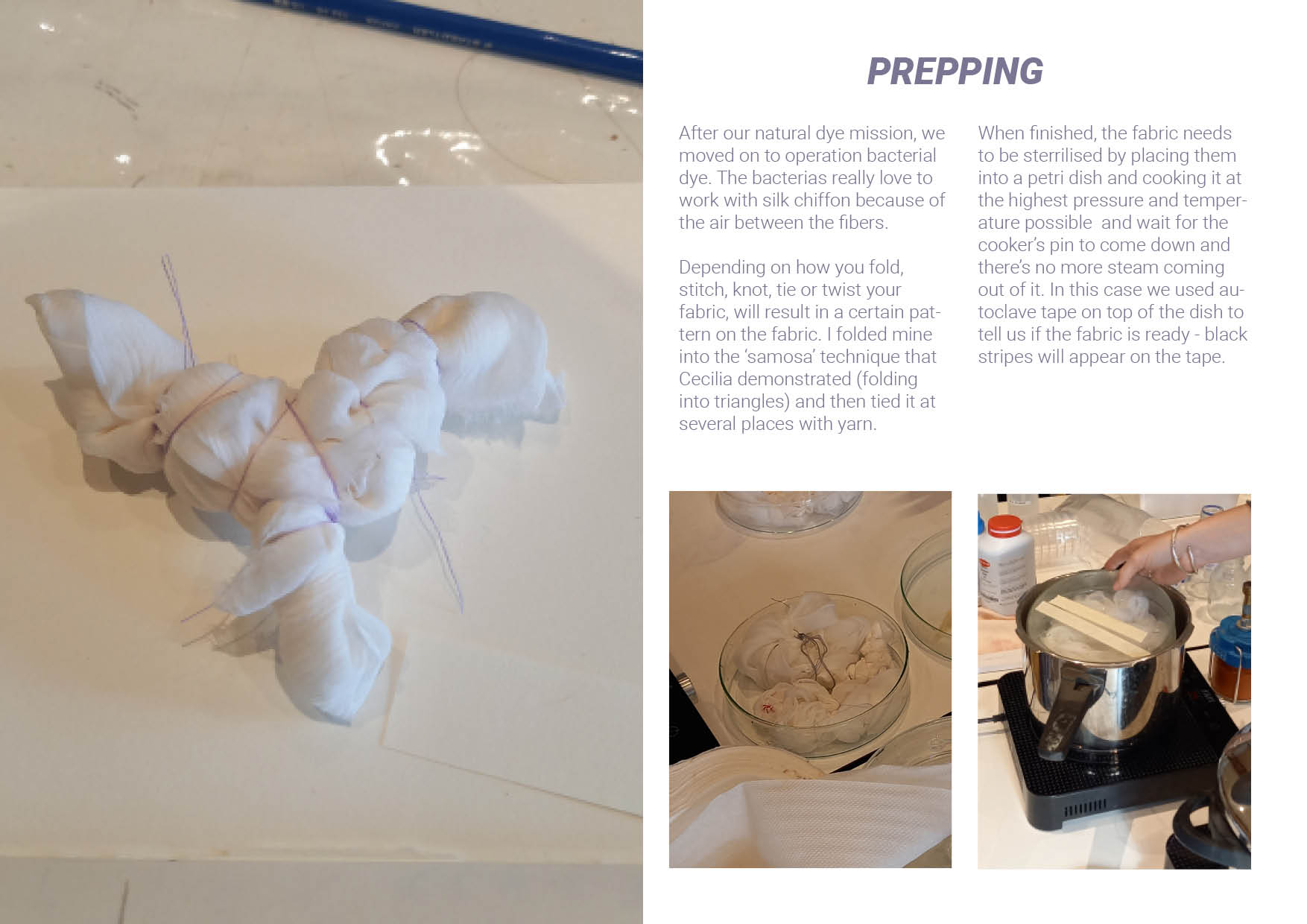Week04

This week was just beautiful with all of the amazing colors, knowledge and techniques. It was really interesting to get acqainted with the natural dying process and learn about mordants and modifiers. We started with a natural dye bath where everybody got to pick a color ingredient such as onion peels (returning orange and yellow shades), Campeche (logwood chips which return purple shades) and Cochineal (insects which return bright fuschia). I choose Eucalyptus which returned soft beige and brown shades and a nice smell.

4.1 Natural dye¶
In fabric, we distinct between vegetal fibers (such as cotton) and animal fibers (such as silk). Before dying, the fabric needs to be prepared in two steps: step 1 is called scouring, which will remove impurities etc and step 2 is called mordanting which will set up your fabric for dying and improves the quality of the end result. The instructions are explained below.

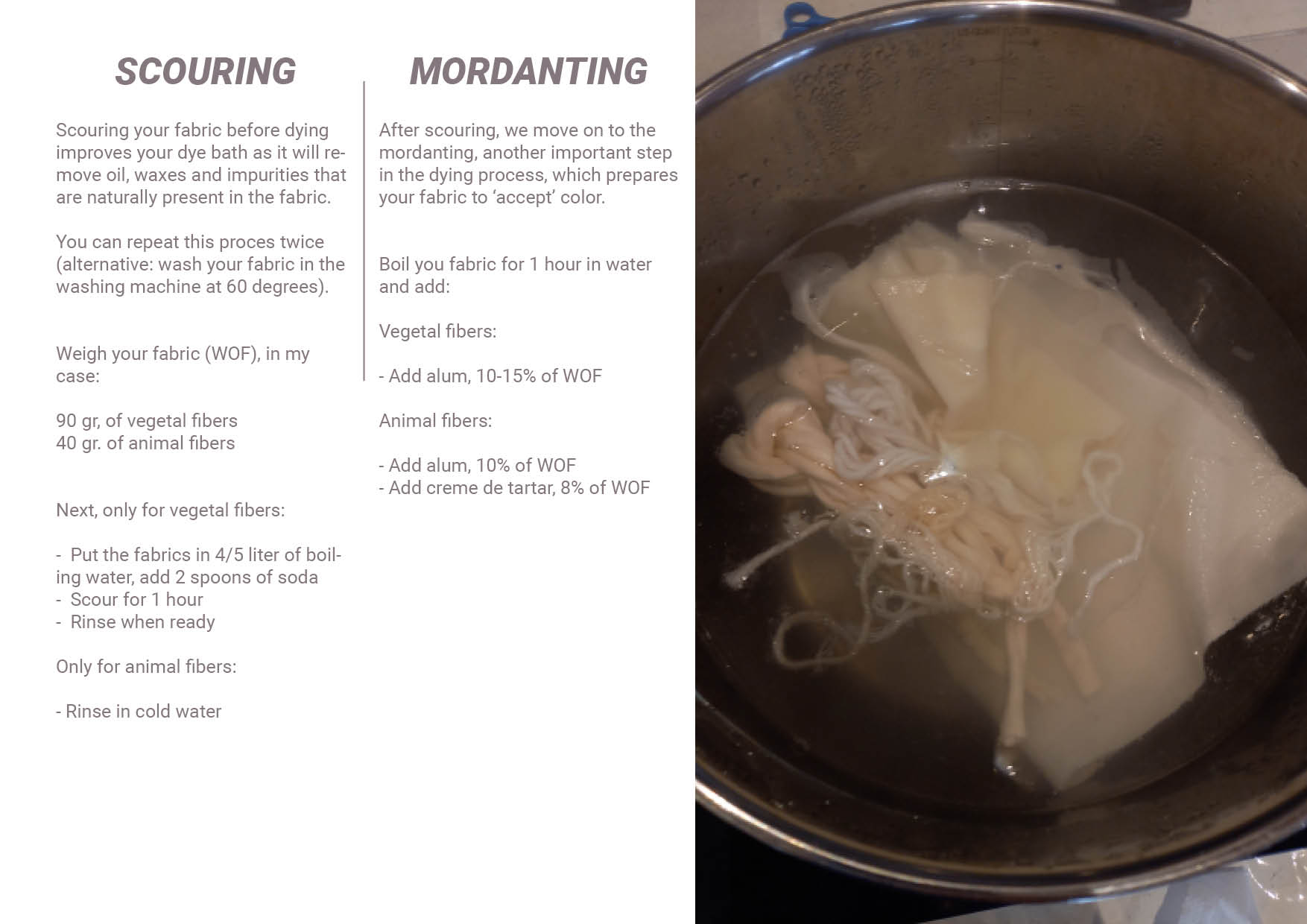
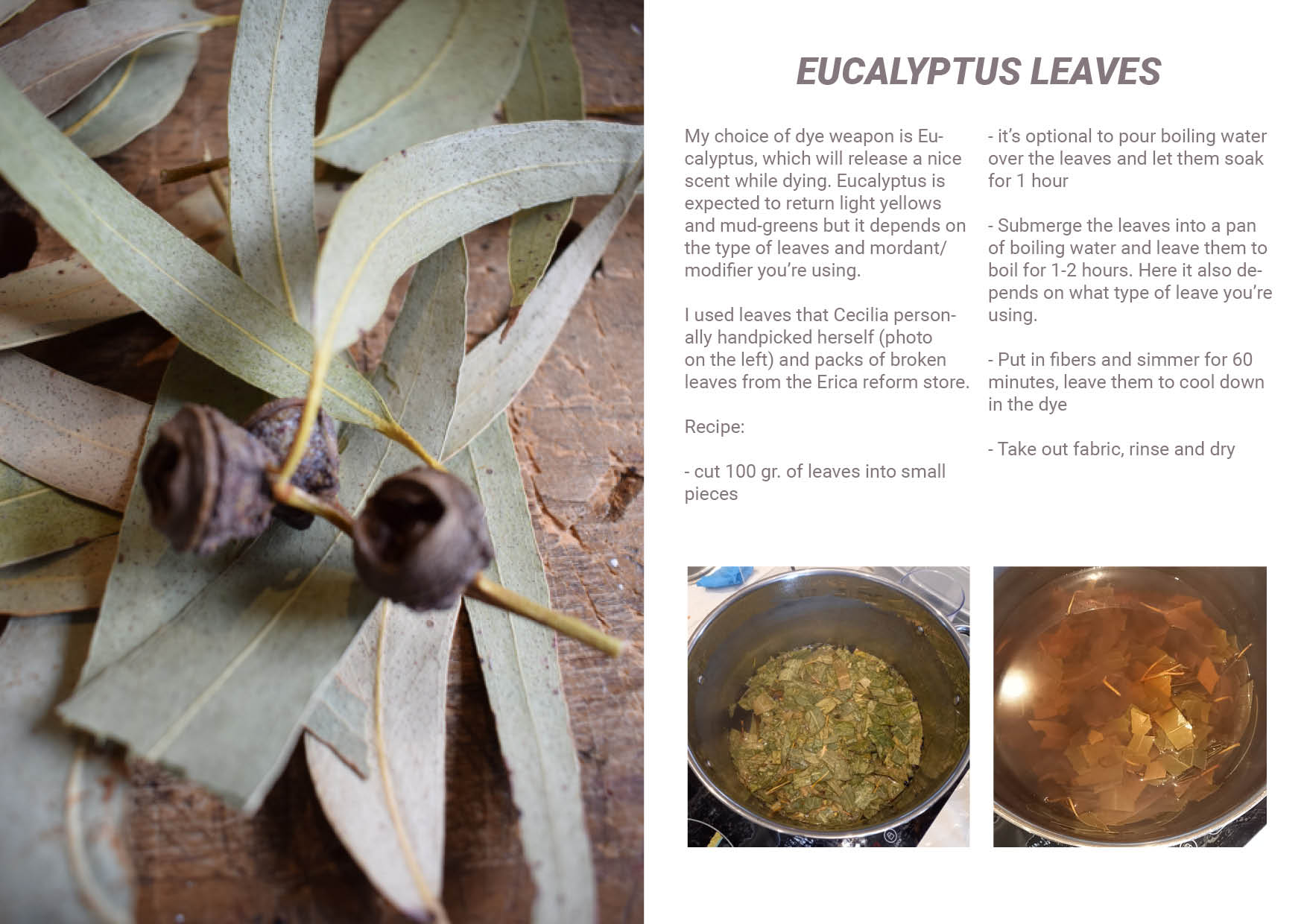
The results of the first dye bath:
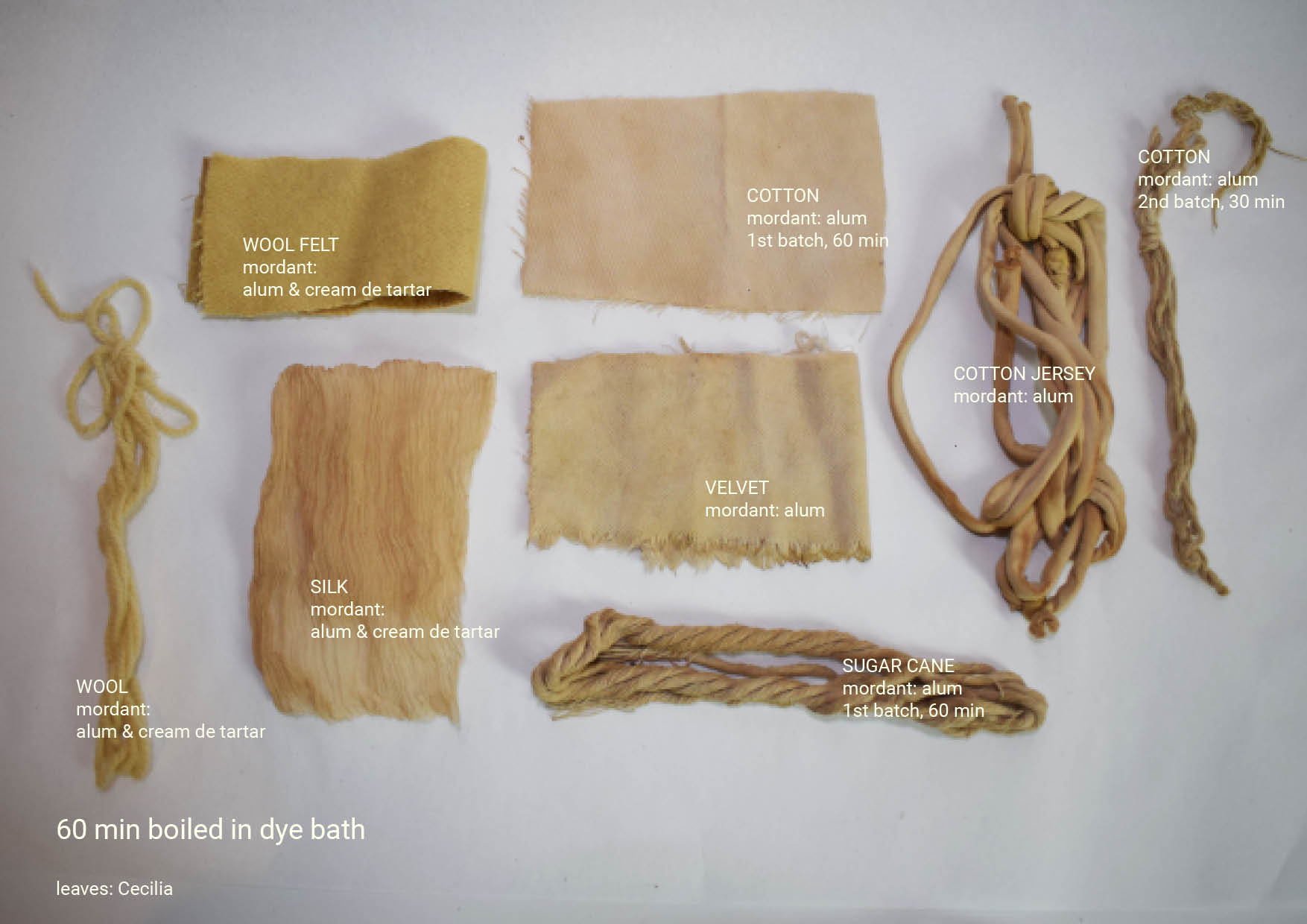
Eucalyptus dye bath, first batch, credit: Patty Jansen 2021
4.1.2 Color changing agents¶
Modifiers can be used to change the color of your dye bath. Some color changes are dramatic, other more subtle. The overview below list the different types of modifiers and gives an indictation of what effect they might have.
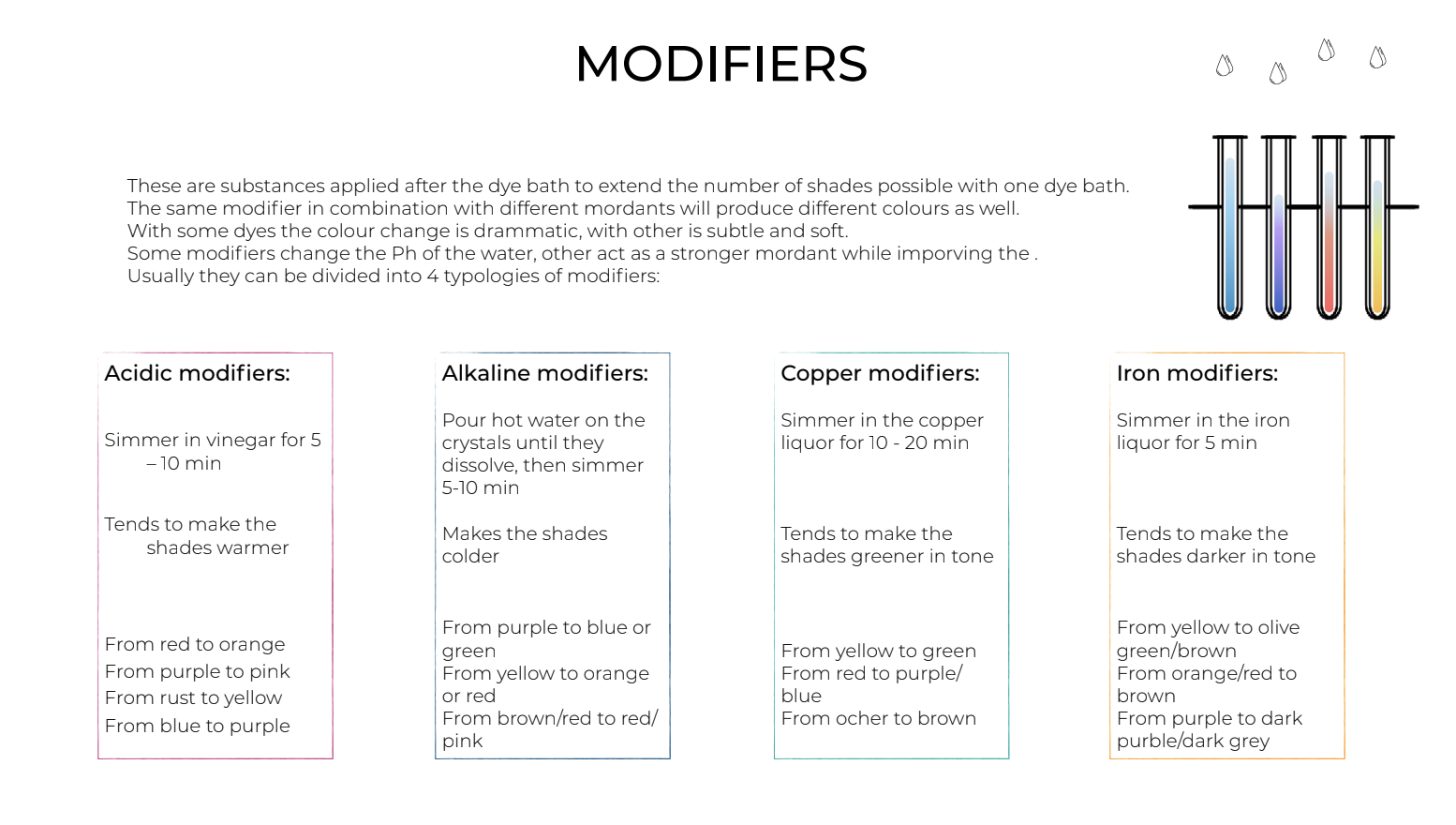
Source: Fabricademy lecture by Cecilia Raspanti
I used Alumn (turning yellow/greenish), Citrus Acid (turning orange/salmon), Iron (turning warm grey) and Copper (turning moss greenish) as modifiers:
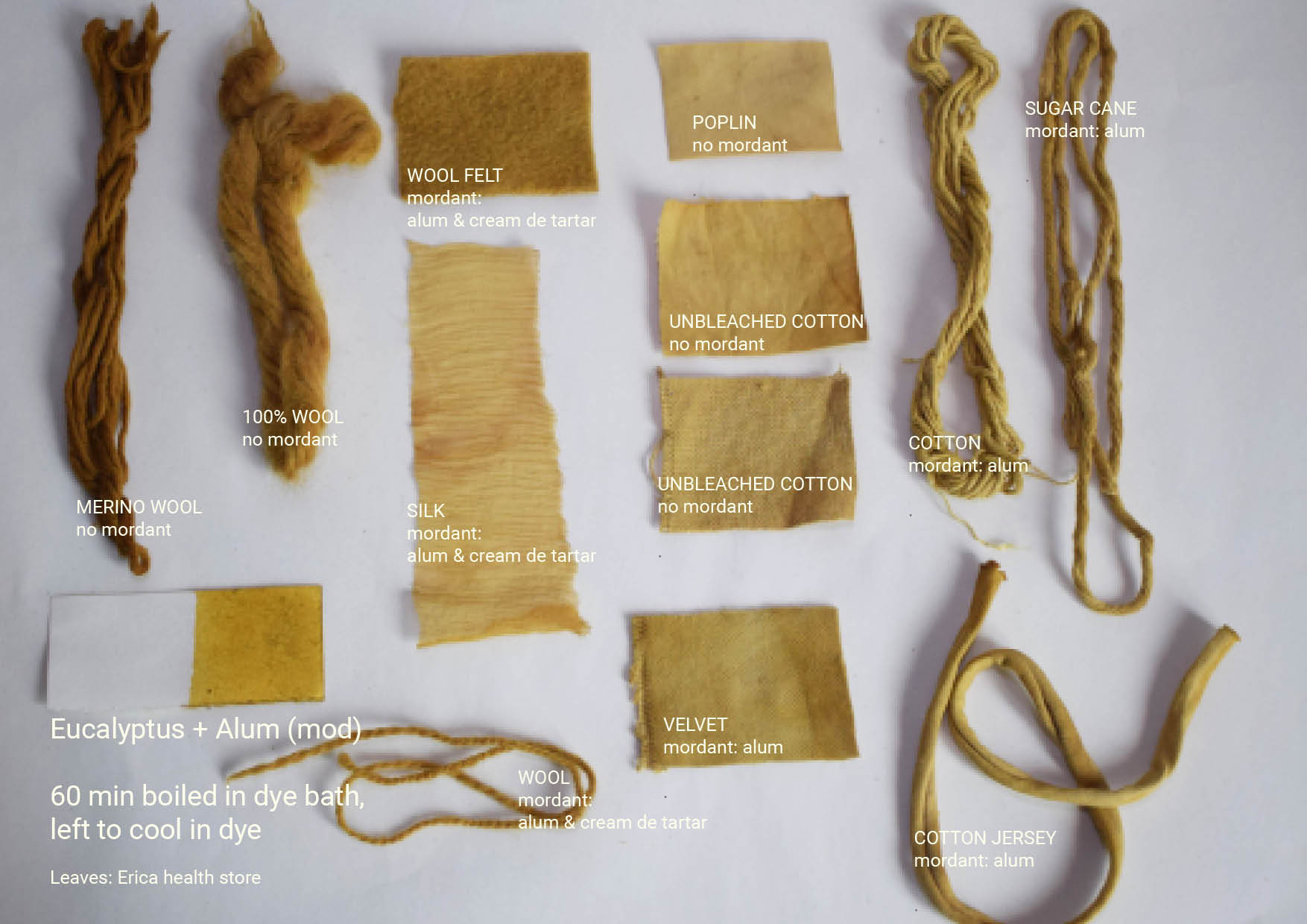
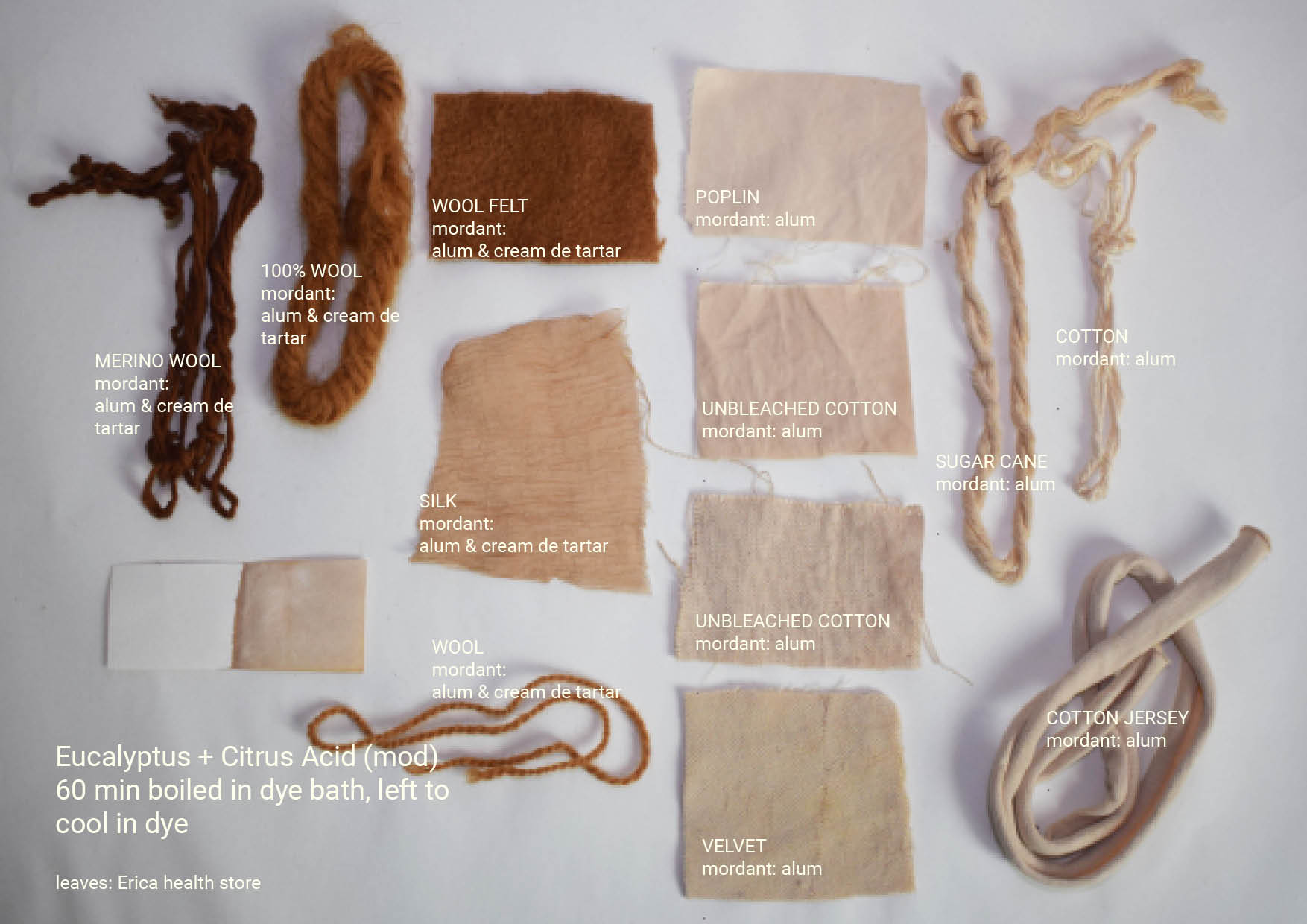
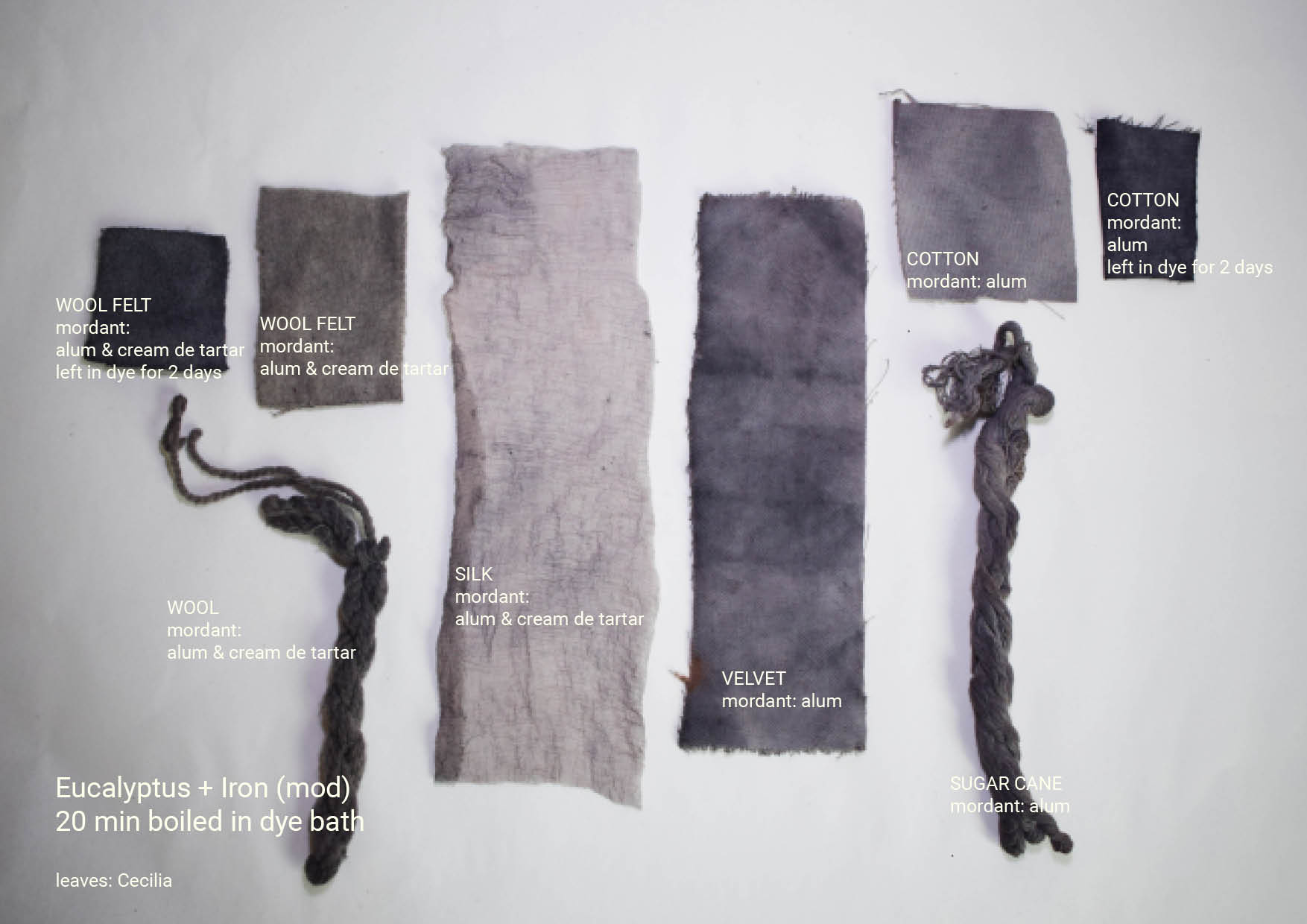
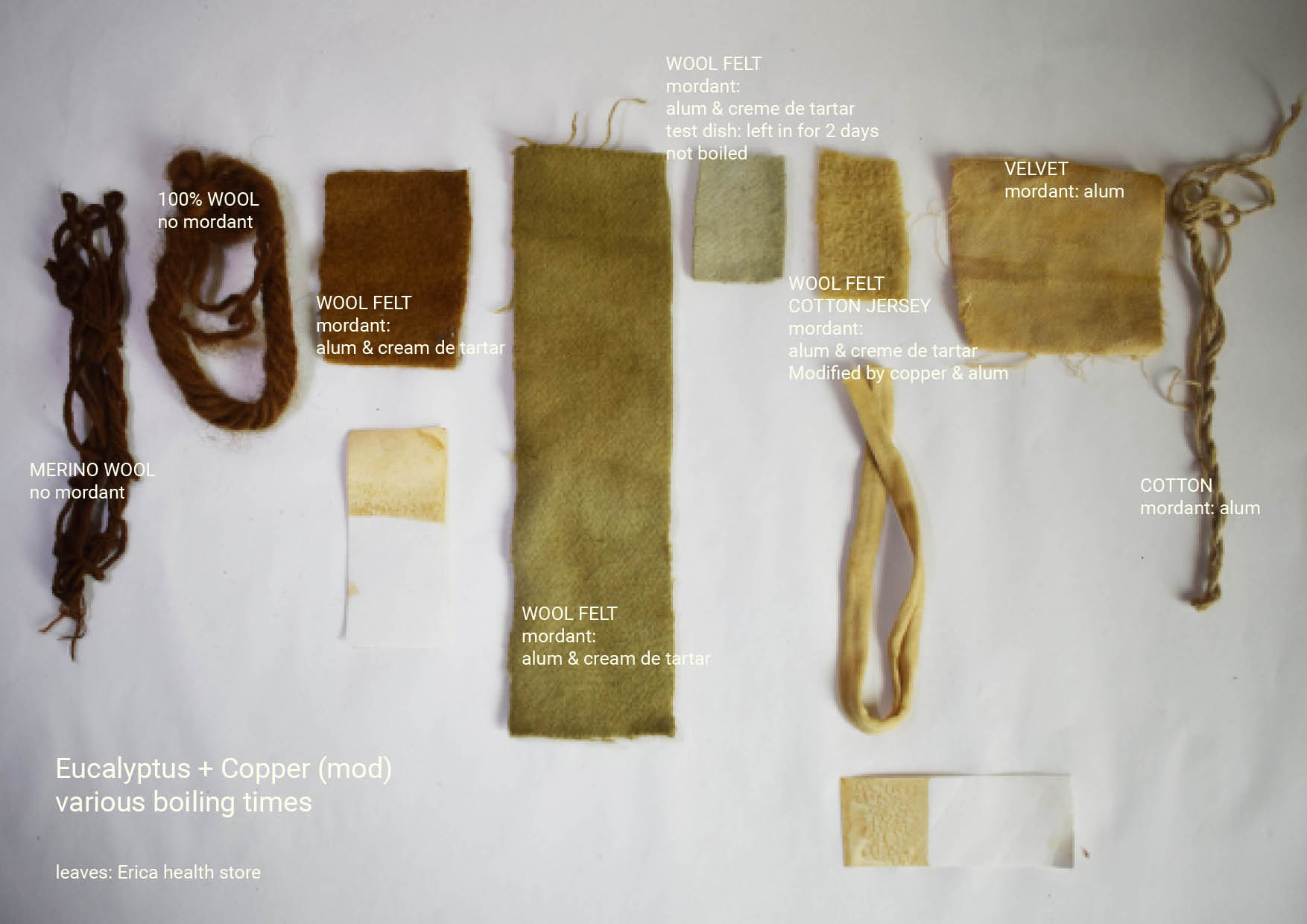
Eucalyptus dye with alumn, citrus acid, iron and copper as modifier, credit: Patty Jansen, 2021
I took apart a white linnen blouse and dyed one half in a natural Eucalyptus dye bath and the other half in a Eucalyptus dye bath modified with iron and sewed it back together, the result:
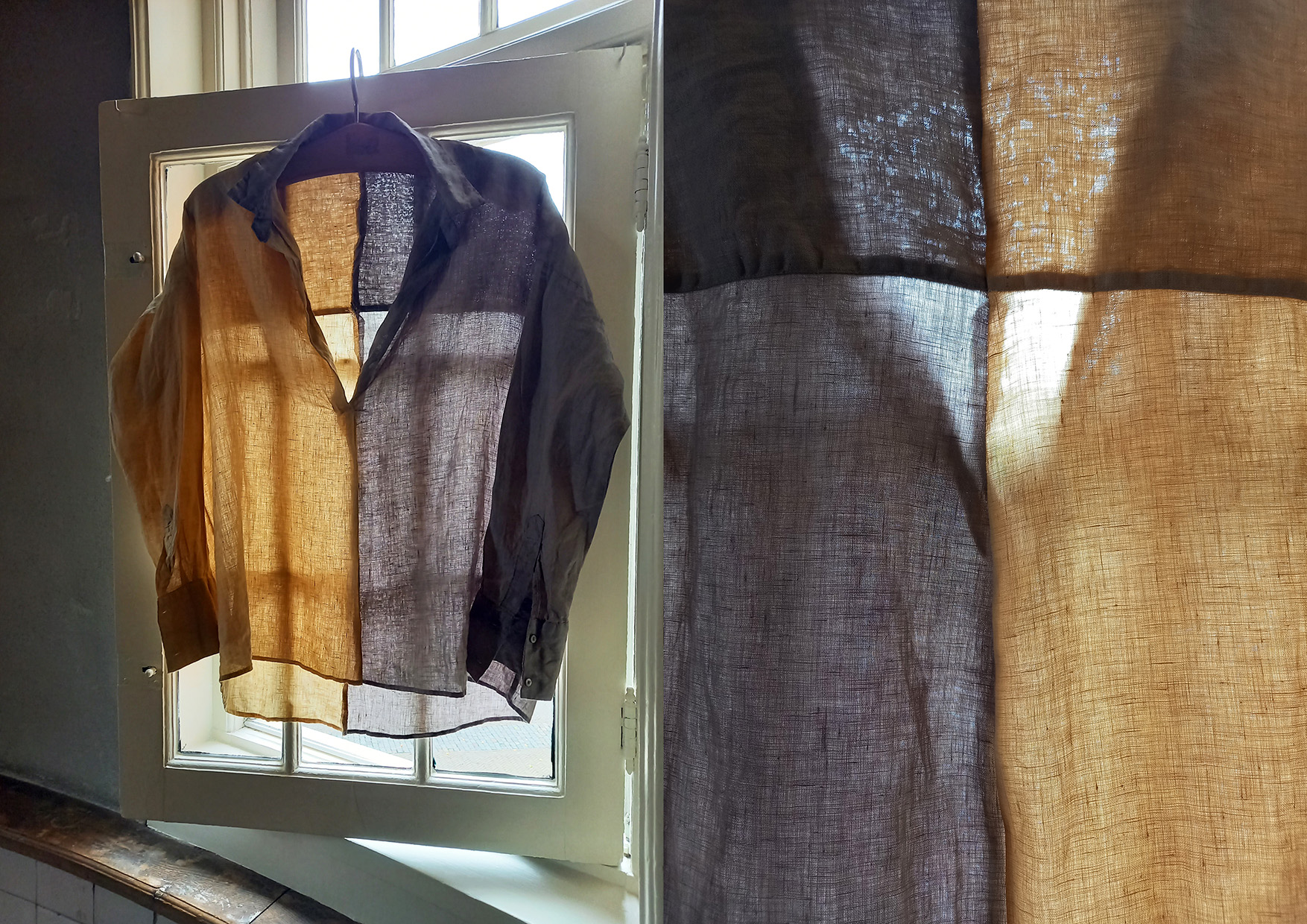
Blouse dyed with eucalyptus dye and eucalyptus dye modfied with iron, credits: Patty Jansen, 2021
4.2.1 Ink & Pigment¶
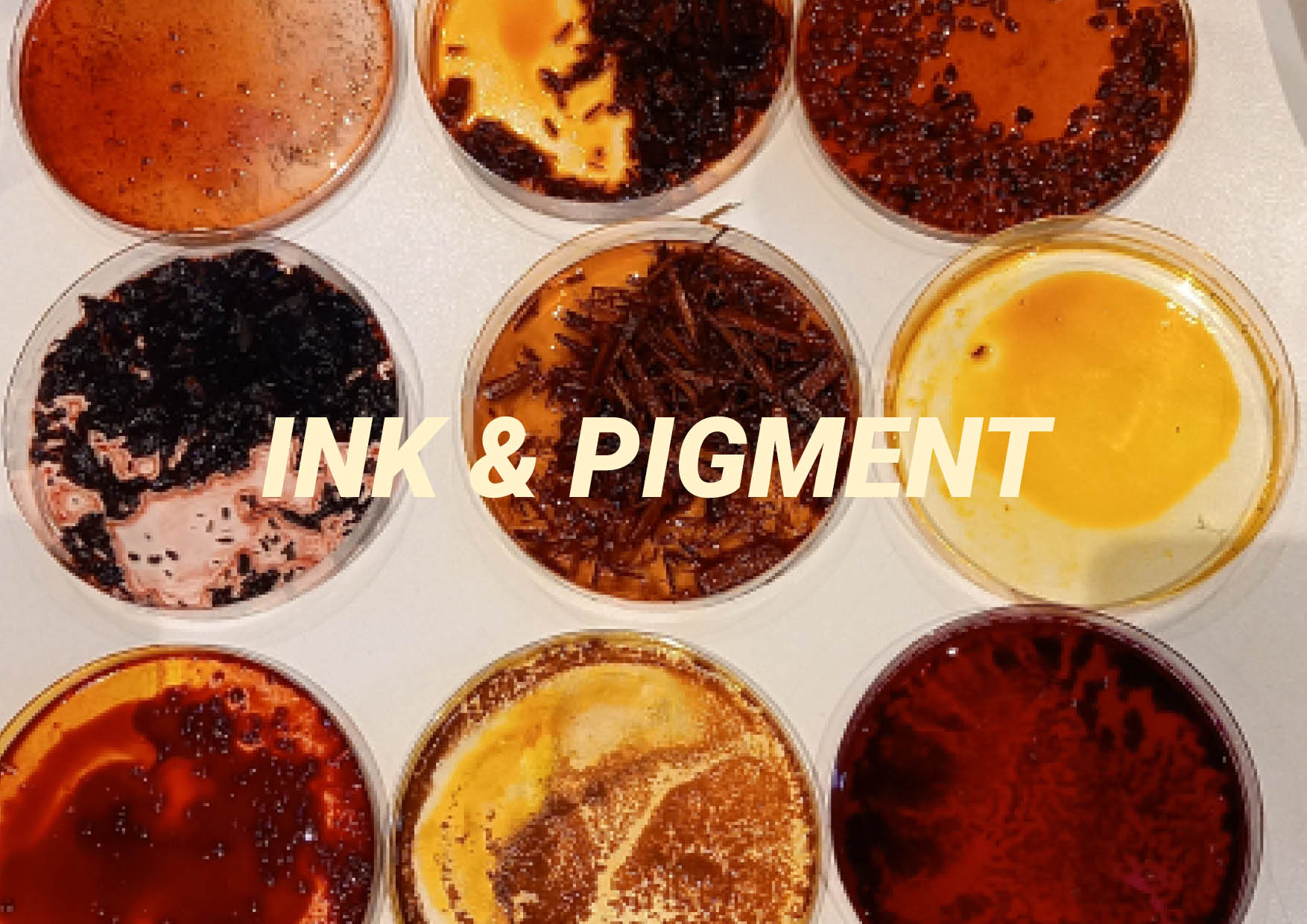
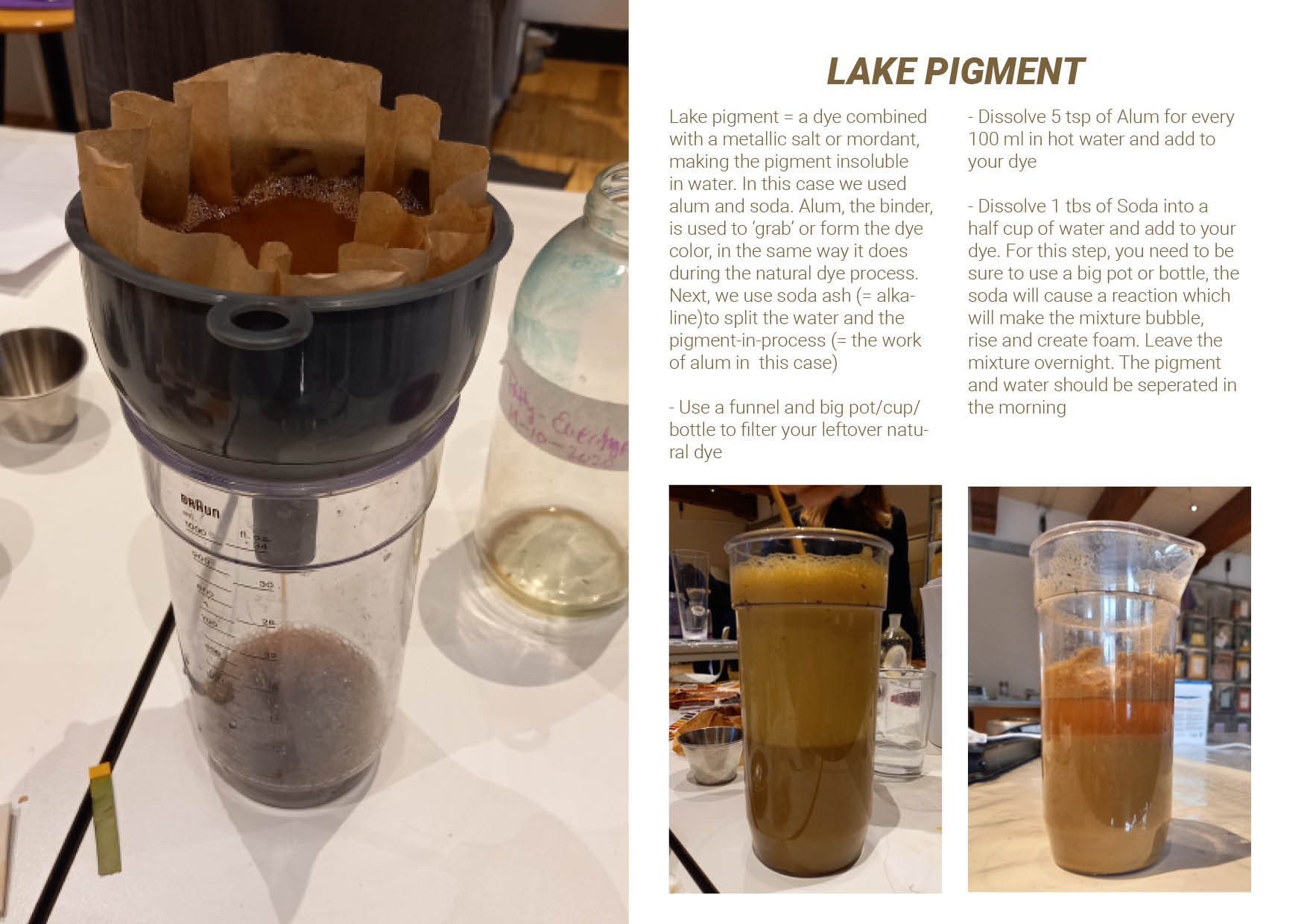
Lake pigment in the making, credit: Patty Jansen 2021
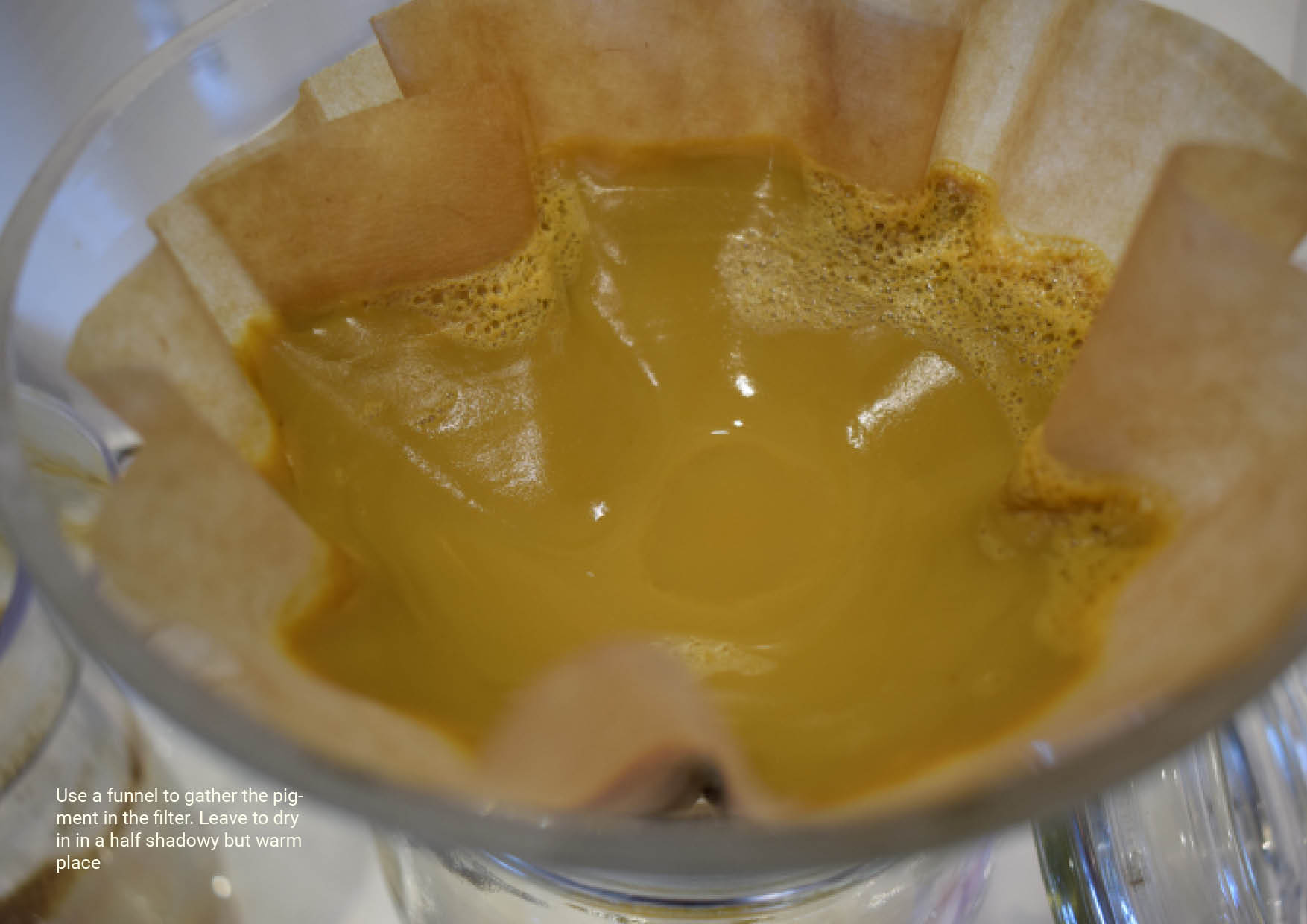
Gathering the pigment, credit: Patty Jansen 2021

Beautiful structures of a lake pigment left to dry, credit: Patty Jansen 2021
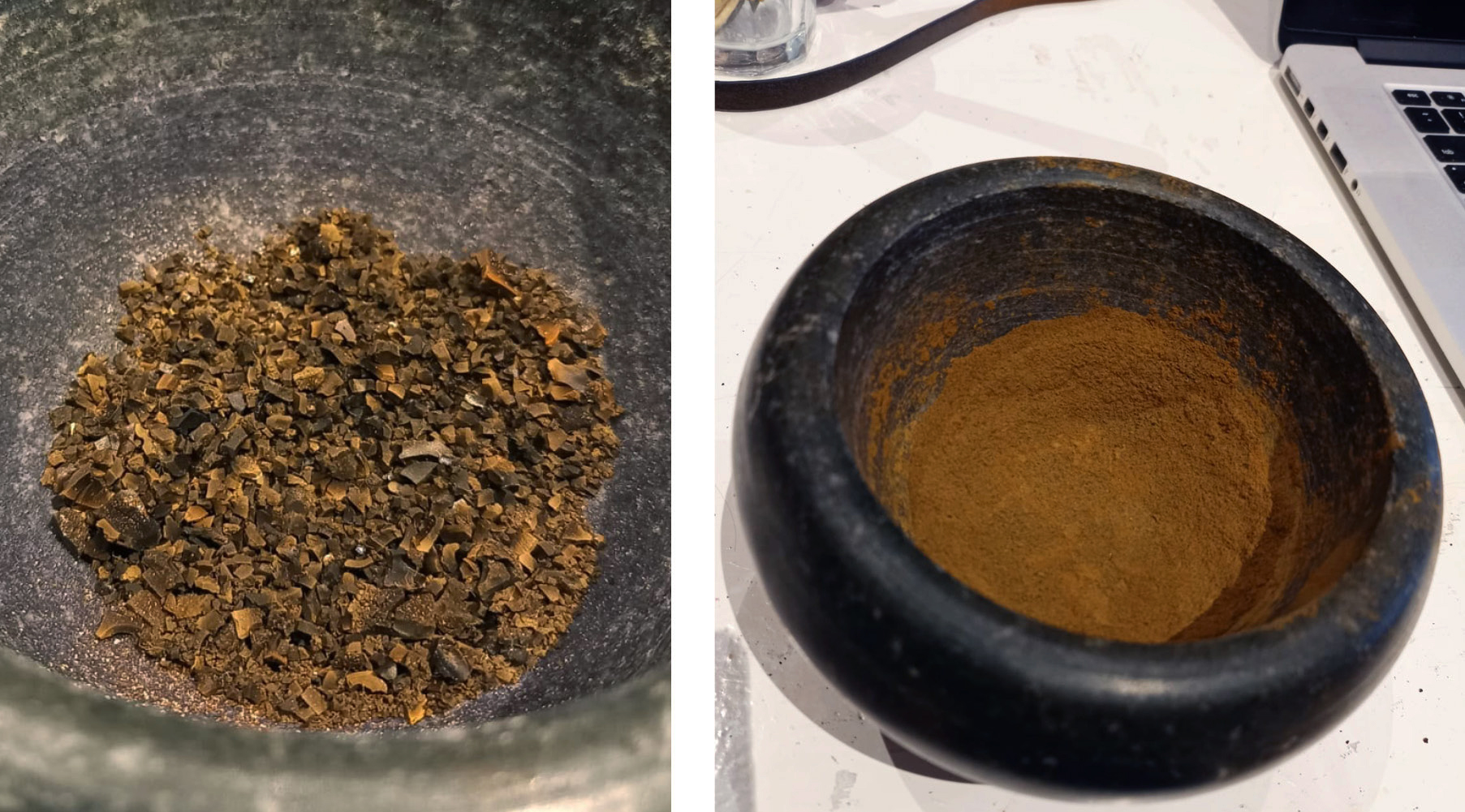
Grinding the pigment, credit: Patty Jansen 2021
4.3.1 Bacterial dye¶
